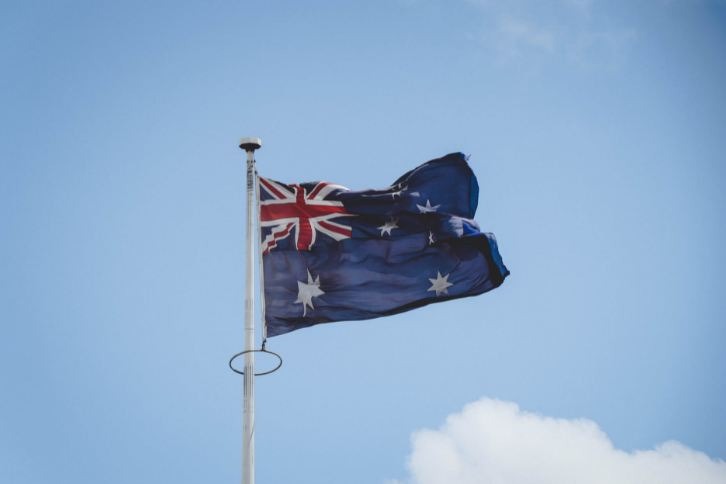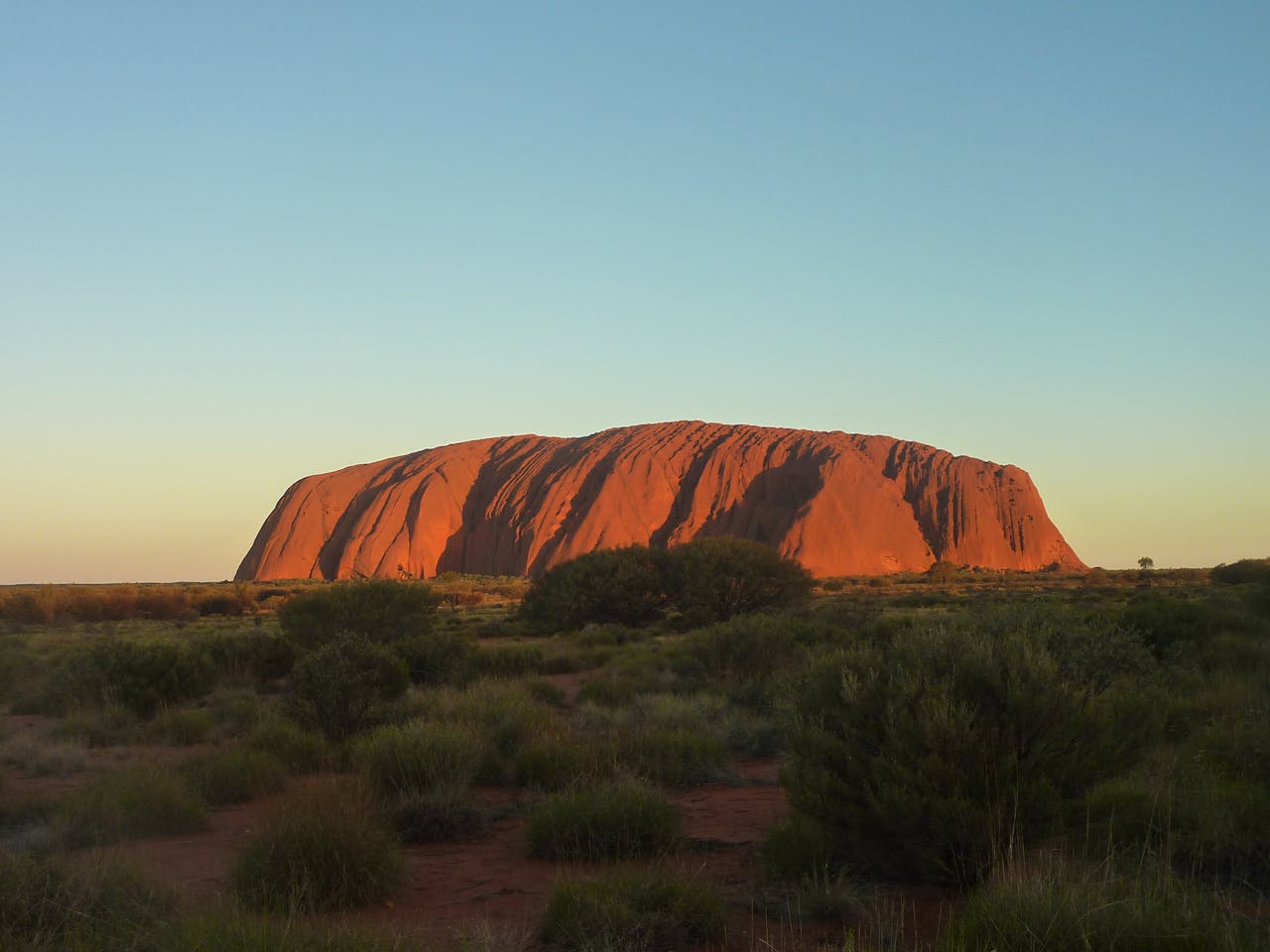How Big Is Australia Compared to the USA? Size and Geographic Comparison
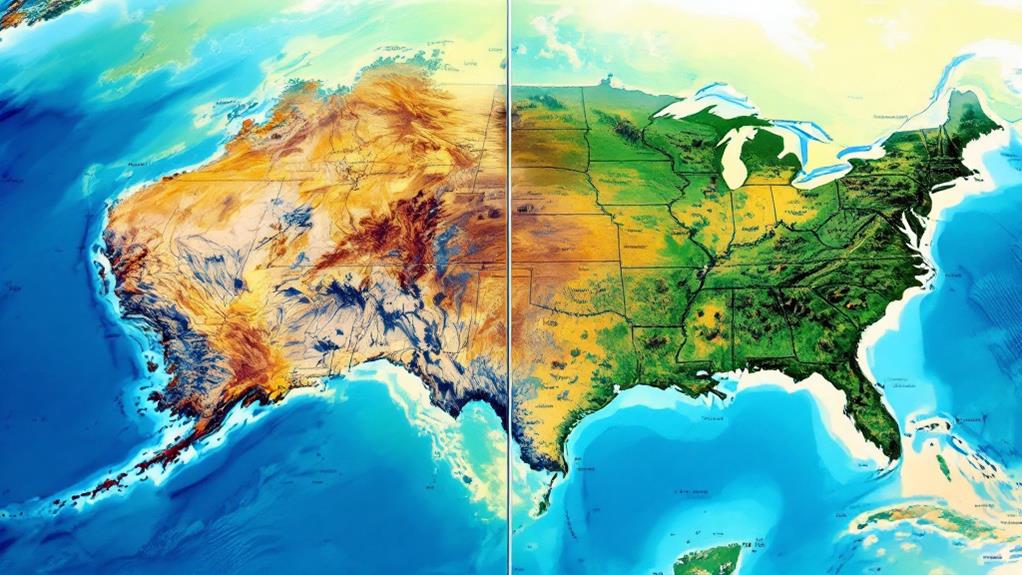
Australia covers about 7.69 million square kilometers, making it the sixth-largest country in the world. In contrast, the USA spans approximately 9.83 million square kilometers, holding the third spot globally. This makes the USA roughly 1.28 times larger than Australia. You'll find Australia's population concentrated along its coasts, providing a stark contrast to the USA's numerous populated cities spread inland. With Western Australia being larger than Texas and Alaska combined, distances between cities like Sydney and Perth are as vast as those between New York and Los Angeles. There's much more to this geographic comparison that might surprise you.
Geographic Size Overview
When comparing the geographic sizes of Australia and the USA, the difference is striking. The size of Australia is approximately 7.69 million square kilometers, making it the sixth-largest country in the world. Meanwhile, the contiguous USA is about 9.83 million square kilometers, placing it third globally. This means the United States is roughly 1.28 times larger than Australia. However, don't underestimate the vastness of Australia's land area. For instance, Western Australia alone surpasses both Texas and Alaska combined, highlighting just how expansive the region is.
Traveling across Australia is an expedition in itself. Major cities like Sydney and Perth are often as distant from each other as New York is from Los Angeles. This vastness is a key factor in how you experience travel in Australia. You'll notice that the sheer size of Australia affects travel logistics. Unlike the USA, where you find a myriad of transportation options, Australia's lower population density leads to fewer choices. This geographical grandeur demands planning, regardless of whether you're driving across the outback or flying between cities. Understanding these differences enriches your appreciation of Australia's colossal landscape.
Population and Density
While Australia's vast landscape offers unique travel experiences, the population and density paint a different picture. Australia's population is markedly smaller, with around 26 million people, compared to the United States' over 333 million inhabitants. This stark contrast in demographics is evident in how each country's population is spread across their respective lands. In Australia, you'd find the population concentrated mainly along the coast, leaving its vast interior sparsely populated. In contrast, the United States has numerous large cities spread throughout its interior, leading to a more even distribution.
When it comes to density, Australia has about 3.3 people per square kilometer, whereas the United States has a much higher density of roughly 36 people per square kilometer. This difference means Australia's open spaces offer a more relaxed lifestyle, with fewer urban pressures, while the USA's denser population contributes to busier, more vibrant urban environments.
Urbanization in the USA is more pronounced, with major metropolitan areas dominating the landscape. In Australia, you'll notice that the expansive open spaces and lower population result in fewer transportation options. These elements highlight the contrasting nature of life and development between these two vast nations.
Travel Infrastructure
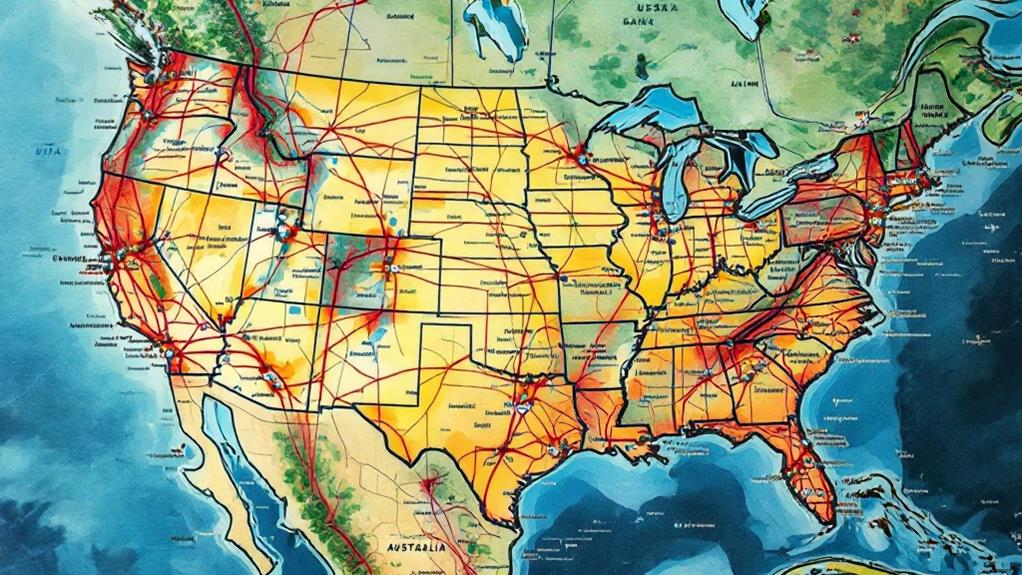
Australia's travel infrastructure reflects its vast landscape and lower population density, presenting both challenges and opportunities for travelers. With a land size comparable to the United States but only about 26 million people, Australia's population is spread thinly across the world map. This means fewer transportation options, as resources are concentrated in major cities with significant gaps in between. When considering how big Australia is compared to the USA, you'll find travel distances between cities like Sydney and Perth rival those from New York to Los Angeles.
You'll need to plan your itinerary carefully, as some transport services, such as flights, ferries, and trains, operate on a once-a-day schedule. Missing a connection in Australia can mean waiting an entire day for the next available option. Given the country's vast size, travel times can be extensive, making advanced planning essential. Custom trip planning services are invaluable for optimizing your itinerary. They help you navigate the limited frequency of transport options, ensuring a smooth travel experience. By understanding these logistical challenges, you'll be better equipped to investigate Australia's unique attractions without unnecessary disruptions.
Climate Considerations
As you plan your travel itinerary, it's essential to factor in climate considerations, which vary greatly across Australia. The country's climate spectrum ranges from tropical in the north to temperate in the south. At Cape York, Australia's northernmost point, the climate is warmer and more humid, making it quite different from the cooler temperatures found in southern regions like Tasmania. This diversity in climate zones influences local ecosystems and agriculture markedly.
Australia's dry interior, famously known as the Outback, presents a semi-arid climate characterized by low rainfall. In contrast, coastal regions such as Queensland experience more precipitation, contributing to distinct weather patterns across the country. This variety means you'll need to pack accordingly and plan your activities based on the specific regions you intend to visit.
Comparatively, the USA boasts an even broader range of climate zones, from arctic conditions in Alaska to tropical climates in Florida and Hawaii. Seasonal variations add another layer of complexity. While Australia enjoys summer from December to February and winter from June to August, the USA experiences summer from June to September and winter from December to February. These differences can affect seasonal activities and agricultural practices in both countries, impacting your travel experience.
Quality of Life Factors
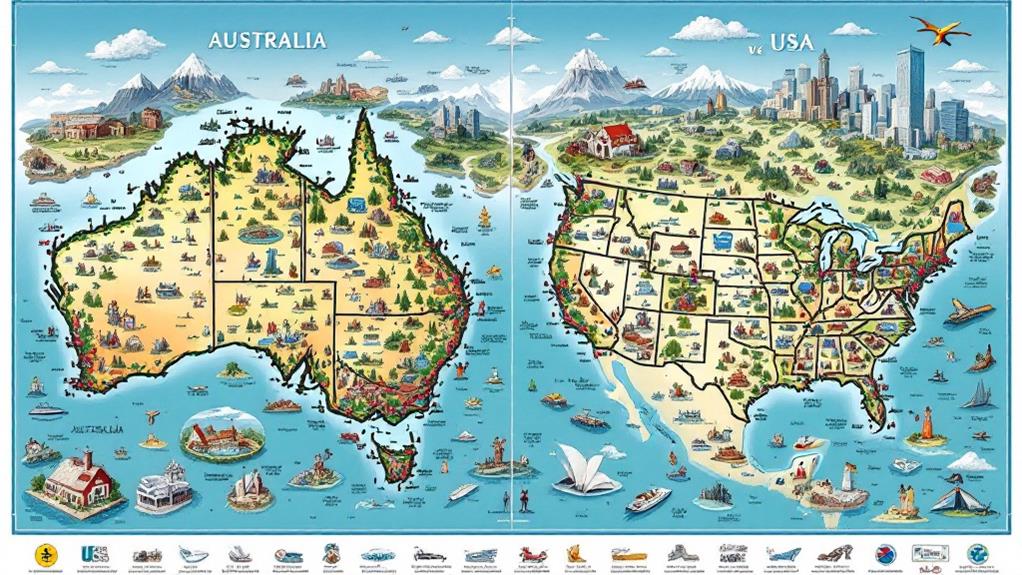
When comparing the quality of life between Australia and the USA, several key factors stand out. One of the most significant differences is in health outcomes. Australians enjoy an average life expectancy of about 83 years, noticeably higher than the 78 years Americans can expect. This longer life span in Australia is supported by a robust healthcare system. Australia's Medicare provides crucial medical services to all citizens, ensuring everyone has access to necessary care. In contrast, the USA's healthcare system leans more toward privatization, which can lead to disparities in access and quality of care.
Education quality also plays a critical role in quality of life. Australia boasts a near-perfect literacy rate of nearly 100%, slightly higher than the USA's 99%. This high literacy rate reflects the emphasis Australia places on education, contributing to its residents' general wellbeing.
Moreover, Australia frequently ranks high in global quality of life indices, thanks to its clean environment, safety, and overall sense of wellbeing. While the USA does well in some areas, the quality of life can vary greatly depending on if you live in an urban or rural area, influencing your overall experience.
Cost of Living
Cost of living can be a critical factor when deciding where to live, especially when comparing Australia and the USA. You'll find that living in Australia, particularly in cities like Sydney and Melbourne, tends to be more expensive than in the USA. Housing prices in these Australian cities are considerably raised, partly due to economic differences, including higher import costs and a smaller market size. These factors push up the prices of consumer goods and services.
In contrast, the USA offers a wider range of cost-of-living options. Urban areas in the USA, like Texas, can be quite affordable compared to pricier places like California. This variation is largely due to economic differences between states, highlighting that your location within the USA can greatly influence how far your budget stretches.
Taxes also play a role. Australia's Goods and Services Tax (GST) can contribute to living costs, a factor that might not be as pronounced in some US states. Furthermore, fluctuating exchange rates can affect how expensive or affordable each country feels, especially if you're a traveler or an expatriate. Understanding these economic differences can help you make informed decisions about where to live.
Environmental Implications

While cost of living is a key consideration, the environmental implications of choosing between Australia and the USA are likewise important. Australia faces unique biodiversity challenges, boasting over 1,700 species found nowhere else on Earth. However, these species are under threat from habitat loss and climate change. Extreme weather events like droughts and bushfires exacerbate these challenges, impacting ecosystems and species such as the endangered koala.
In contrast, the USA's vast and varied landscapes, from its lush forests to arid deserts, present their own set of biodiversity challenges. Conservation policies in the USA must address climate change, pollution, and habitat preservation to maintain its ecological health. National parks play a crucial role, with over 63 million acres dedicated to preserving natural landscapes and biodiversity.
Both countries contribute greatly to global environmental health. Australia is a leader in marine conservation, particularly with initiatives like protecting 30% of its marine areas by 2030. Meanwhile, the USA's national park efforts aim to safeguard diverse ecosystems. When considering the environmental implications, you must weigh these biodiversity challenges and initiatives to make an informed decision.
Cultural Comparisons
Cultural differences between Australia and the USA are striking and diverse, from portion sizes to sports inclinations. In the USA, fast food portion sizes tend to be larger, reflecting cultural norms around food consumption that emphasize abundance. In contrast, Australian servings are more moderate, aligning with their dietary habits. When shopping for clothes, you'll notice Australian sizes generally run smaller than American ones, which can be perplexing for international shoppers trying to navigate fashion across these cultures.
Sports are another area where cultural norms vary dramatically. While Americans are passionate about football, basketball, and baseball, Australians rally behind Australian rules football and cricket. These sports aren't just games—they're woven into each country's cultural fabric, influencing social gatherings and national identity.
In terms of entertainment, Hollywood is a powerhouse, dominating global film and TV. Meanwhile, Australia has carved out its niche with unique contributions like "Crocodile Dundee" and "Neighbours," showcasing its distinct voice. Economically, large American retailers like Walmart highlight a different retail environment compared to Australia's major supermarkets, Woolworths and Coles. These differences illustrate the unique consumer behaviors and economic landscapes shaped by cultural norms in both nations.
Travel Planning Tips
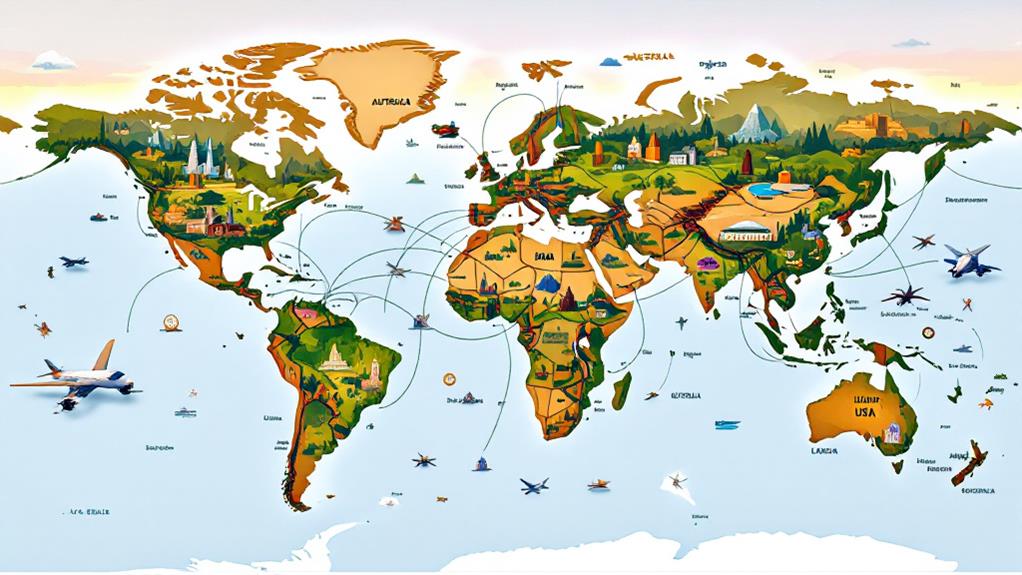
Planning a trip to Australia requires careful consideration of the country's vast distances and unique travel conditions. With cities like Sydney and Perth sitting roughly 2,500 miles apart, you're looking at significant travel time between major destinations. Crafting your travel itineraries with this in mind is vital to making the most of your expedition.
First, recognize Australia's lower population density; this means transportation options, such as flights and trains, might not run as frequently as you'd expect. It's important to check schedules well in advance to avoid inconvenient travel delays, particularly since some routes may only offer transport once a day. This planning will help you manage the extensive travel times between destinations more effectively.
Flexibility is your friend when traversing Australia's expansive geography. Be prepared to adjust plans if disruptions occur, ensuring you can still enjoy your itinerary without unnecessary stress. Allow extra time for logistics and activities, keeping in mind that distances can affect your comprehensive travel experience. By planning ahead and staying adaptable, you'll have a smoother and more enjoyable adventure across Australia's stunning landscapes. Remember, a well-thought-out itinerary is your ticket to a memorable trip.

